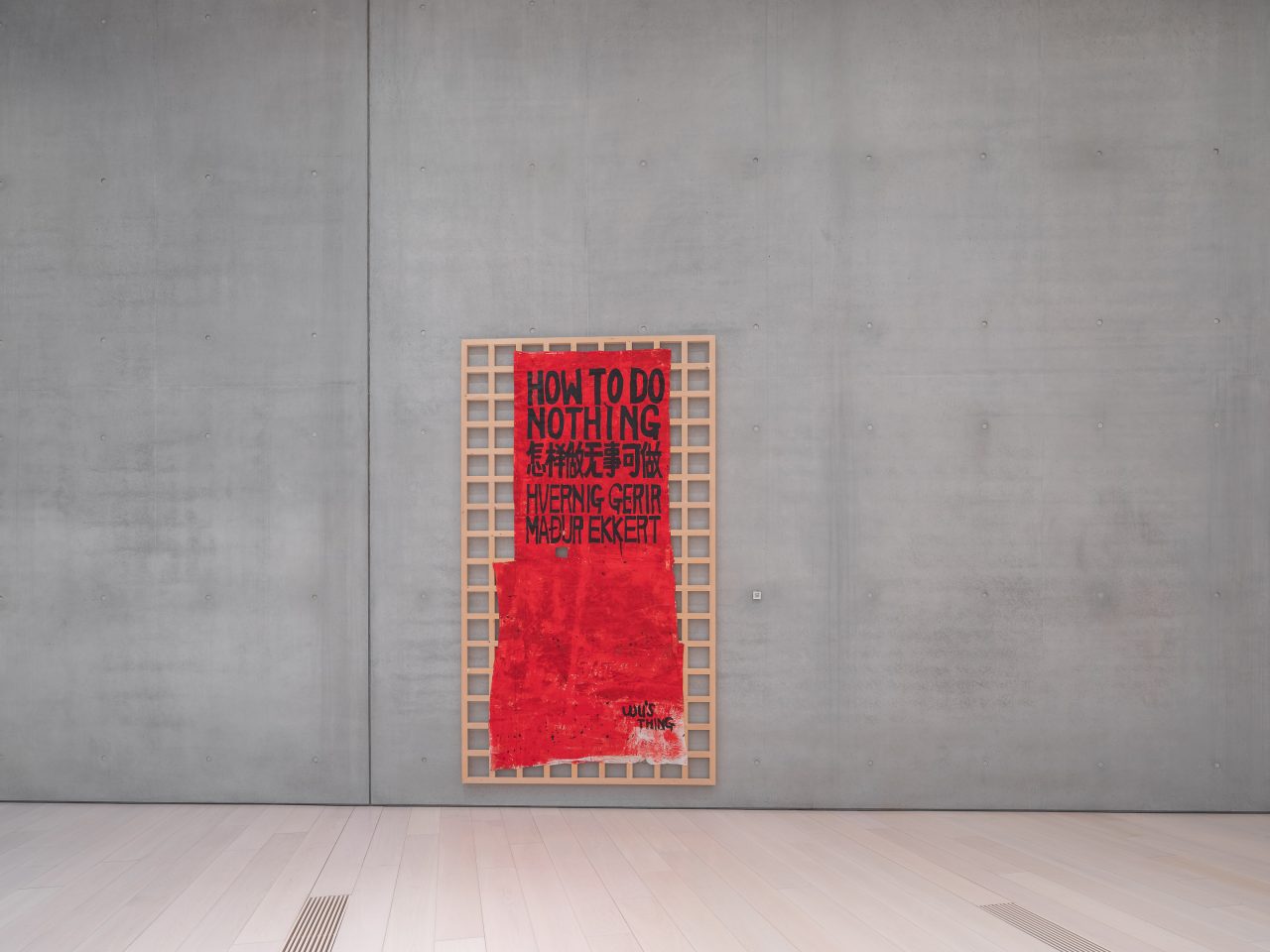As an important figure in the “85 New Wave”, Wu Shanzhuan is one of the most prominent contemporary conceptual artists in China. He has always concentrated on daily life, surrounding environments and ordinary occurrences. In his early creations, he keenly captured the decline, contradiction or remains of the system hidden behind the fragments of life. Wu began his decades of European life at the end of the 1980s and thus transferred from the “intermediate state” in China to the intermediate zone that Chinese expatriates experienced in Western social life. The changes in life promoted him to further explore individuals in terms of their self-perception as well as their identity, work and labour as a social member.
HOW TO DO NOTHING was first displayed in his solo exhibition TODAY NO WATER (22 Bar, Reykjavik) held in a bar in Iceland during his early days in Europe. In that exhibition, the artist filled the whole bar with big-character posters: black words on red paper in three languages (Chinese, English and Icelandic). Various sentences were written, such as “my red was bought from a Western supermarket”, “how many keys fit the lock”, “but still red”, and “today no water”. Of them, the sentence HOW TO DO NOTHING was drawn many times, which seemingly indicates the core of Wu’s careless and diversified creative practice, namely, emptiness provides more possibilities. It is around this period that the artist devoted himself to exploring the minimum limit of “doing” art via various methods, where he attempted to hollow out “artist” or “art creation” and transfer them into pure economic transactions. For example, in 1989, he sold shrimps in an art gallery and called it “Big Business”; in Iceland in 1993, he sold himself on a 25% discount on the black market; he was also known for “Putting the Cost of Art Materials in a Bank”. This also echoes his statement in “Quiet Sea, Blind Sea, and Asexual Sea” published in 1986, where he said, “I think art is a quiet sea… It is a static and intangible empty box, which will certainly accept anything anyone puts in it but, at the same time, is destined to never be full; its power lies in nothing.”
Image courtesy of BY ART MATTERS, photo: Wu Qingshan.
展览现场-1280x552.jpg)
展览现场-1280x853.jpg)


